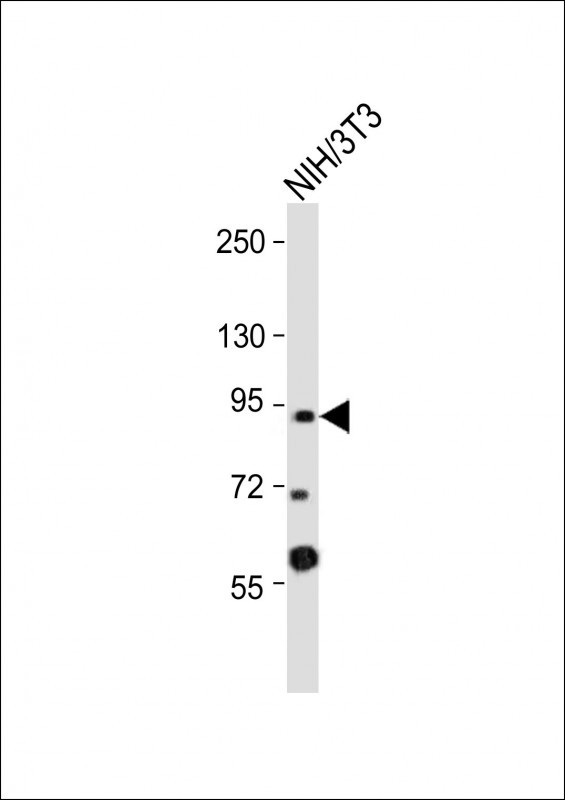产品名称
DYRK1A Rabbit Polyclonal Antibody (Center)
别名
Dual specificity tyrosine-phosphorylation-regulated kinase 1A, Dual specificity YAK1-related kinase, HP86, Protein kinase minibrain homolog, MNBH, hMNB, DYRK1A, DYRK, MNB, MNBH
存储缓冲液
Purified polyclonal antibody supplied in PBS with 0.05% (V/V) Proclin 300. This antibody is purified through a protein A column, followed by peptide affinity purification.
Human Gene ID
NP_001387.2;NP_567824.1;NP_569120.1;NP_569122.1
Human Swissprot No.
Q13627
特异性
This DYRK1A antibody is generated from rabbits immunized with a KLH conjugated synthetic peptide between 389-418 amino acids from the Central region of human DYRK1A.
运输及保存条件
Maintain refrigerated at 2-8°C for up to 2 weeks. For long term storage store at -20°C in small aliquots to prevent freeze-thaw cycles.
背景介绍
DYRK1A is a member of the Dual-specificity tyrosine phosphorylation-regulated kinase (DYRK) family. This member contains a nuclear targeting signal sequence, a protein kinase domain, a leucine zipper motif, and a highly conservative 13-consecutive-histidine repeat. It catalyzes its autophosphorylation on serine/threonine and tyrosine residues. It may play a significant role in a signaling pathway regulating cell proliferation and may be involved in brain development. This gene is a homolog of Drosophila mnb (minibrain) gene and rat Dyrk gene. It is localized in the Down syndrome critical region of chromosome 21, and is considered to be a strong candidate gene for learning defects associated with Down syndrome.
组织表达
Ubiquitous. Highest levels in skeletal muscle, testis, fetal lung and fetal kidney.
细胞定位
Nucleus. Nucleus speckle {ECO:0000250|UniProtKB:Q61214}
功能
Dual-specificity kinase which possesses both serine/threonine and tyrosine kinase activities. May play a role in a signaling pathway regulating nuclear functions of cell proliferation. Modulates alternative splicing by phosphorylating the splice factor SRSF6 (By similarity). Exhibits a substrate preference for proline at position P+1 and arginine at position P-3. Has pro-survival function and negatively regulates the apoptotic process. Promotes cell survival upon genotoxic stress through phosphorylation of SIRT1. This in turn inhibits TP53 activity and apoptosis (By similarity).

